
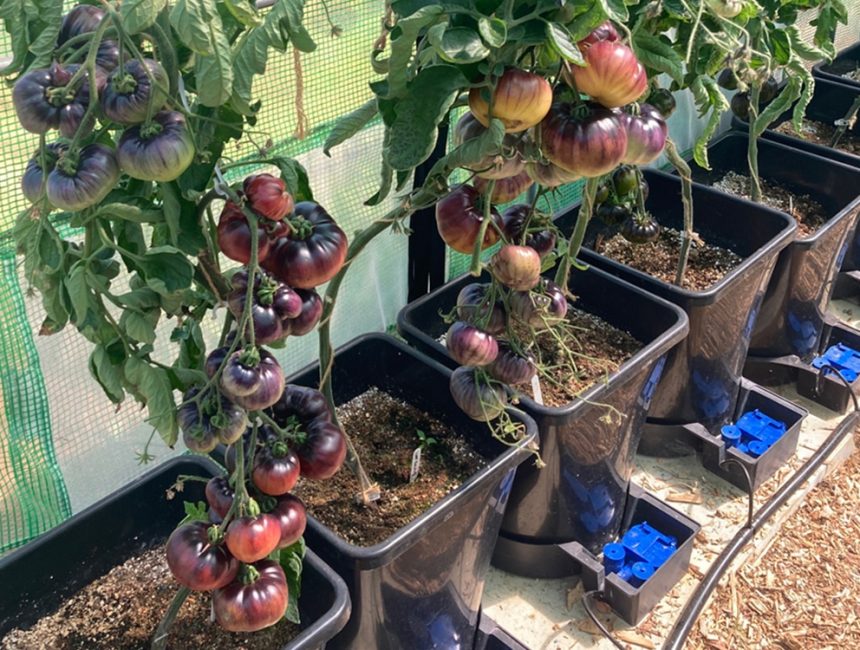
Often it starts with an image of something utterly uncanny, something apparently real but other-worldly. So it was with Niall Radford in 2017. ‘I saw a picture of a totally black tomato (Black Beauty) and decided that it was a must on my grow list. I eventually obtained some seeds from France. These provided spectacular Black Beauties with an excellent flavour.’
‘From that point I was hooked on black tomatoes and their anthocyanin presentation – that very same antioxidant that gives blueberries their colour, causing the tomato to have black/purple colouration across part or with some varieties all of the fruit. I took up the continuous saving of seeds whilst keenly obtaining fresh seed and further varieties’.
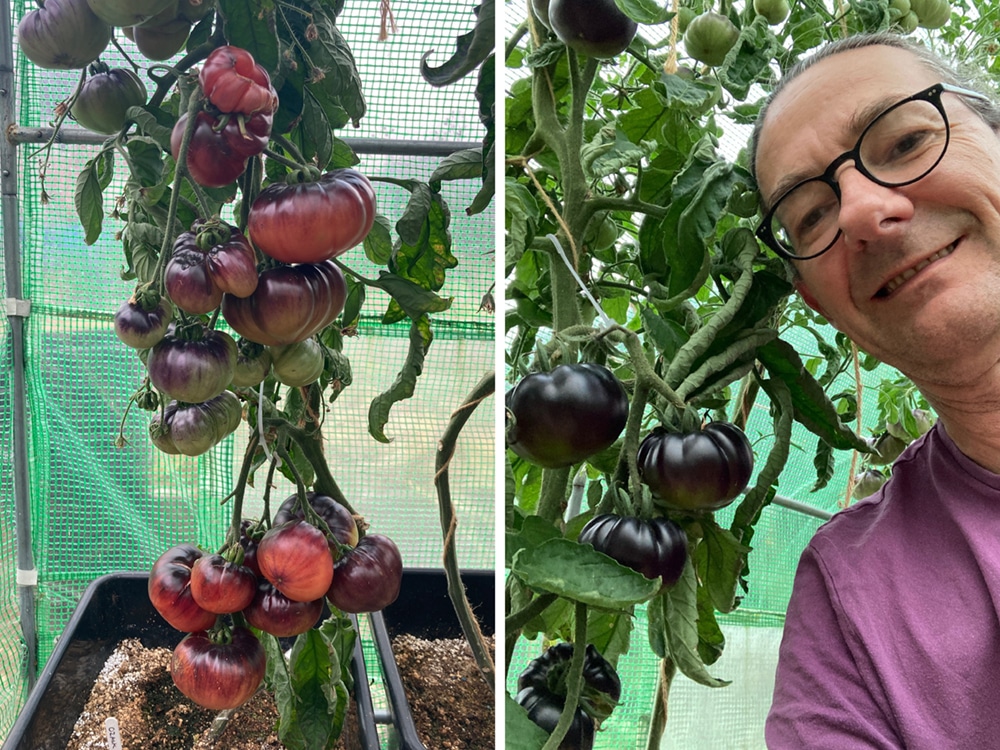
Now Niall’s every gardening space is packed with richly diverse tomato plants. It’s a living, constant, visual history of the fruit that provides yet more growers with inspiration. Niall recently took us for a spin around his plots, explaining the roots of his obsession, his techniques for growing and how AutoPot modules are helping him massively reduce water consumption and maintenance.
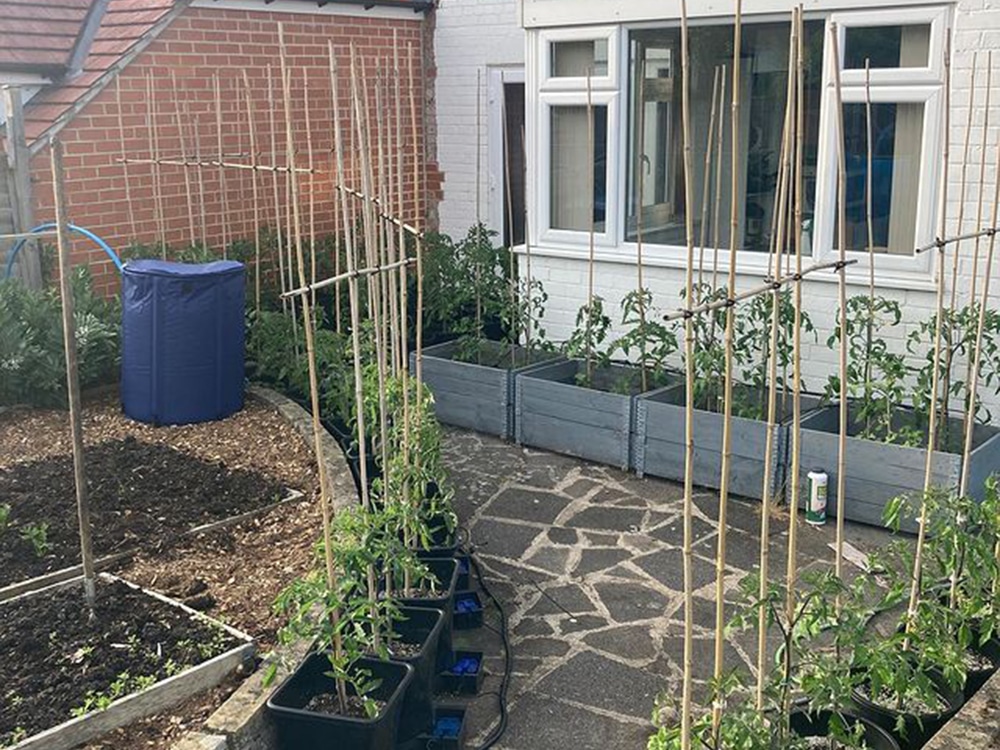
Indescribable hues, voluptuous shapes, wild flavours, and stunning variety, it’s small wonder that growers like Niall find tomatoes simply irresistible. ‘I like the variety of colours as they ripen, the generally meaty flesh and most importantly the fabulous flavours. When grown to their best tomato flavours can range from cheek tingling sour all the way through to very sweet. Some of the antho’ varieties such as Black Beauty also have a smoky umami flavour going on.’
Niall’s current count of over thirty varieties occupy around 130 spots around the garden. The plants are housed in a variety of semi-indoor and outdoor locations. These include ‘a bruised and battered, third hand 5m x 2m polytunnel of the cheap and nasty ‘green’ variety that frankly has more holes than plastic! An old second-hand 6ft x 8ft greenhouse housing 16 tomato plants, a homemade poly-shack with 6 tomato plants in, a garden of raised beds and a patio area. On the patio, I’ve another bank of plants. Elsewhere on the patio and in the garden, there are a further 54 tomato plants.’
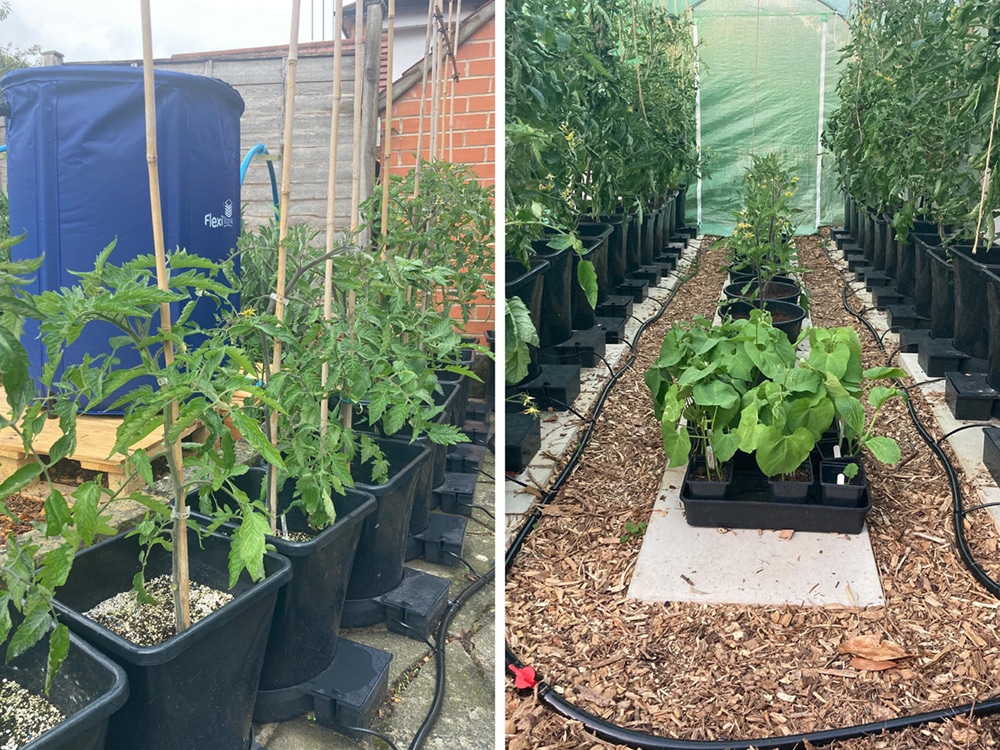
Specific varieties include Black, Blue, and Red Beauty, Michael Pollan, Amethyst Jewel, Kaleidoscopic Jewel, Rebel Starfighter Prime, Rebel Starfighter VT16, Sart Roloise, Pink Berkeley Tie-Dye, Lucid Gem, Alice’s Dream, Ozark Sunrise, P20 Beauty King, Persuasion, Sgt. Peppers, Orange Blue, Xanadu Green Goddess, Cosmos, Wagner Green Blue, Orange Blue, Southern Sparkle, Pascal de Picardie, Great White Blues, Lovely Lush, Purple Sunrise, Afternoon Delight, Crushed Heart and the random plain red tomato Alicante.
As well as being a voyage of discovery, these fruits play a key part in Niall’s burgeoning seed business. ‘I save seed and sell to others on Etsy. I also buy from various original breeders and suppliers domestically and internationally. To name a few – tomatorevolution.com in the UK, Vertiloom in Belgium, Wild Boar Farms and Galactic Magic Seeds in the US.’

Though relatively straightforward to grow and with broadly amenable requirements this variety and quantity of tomato plants throws up challenges. Some of these challenges are constants for gardeners, some are newly emerging.
Variety means various individual plant needs which can be unpredictable with lesser known tomatoes, especially when weather conditions vary. Then there’s the heavy lifting of physically watering and feeding all these plants. Then there’s the related issue of energy costs if using a powered irrigation system. Finally there’s the ever-increasing pressure on gardeners to minimise water consumption. Summer 2022 has baked these issues into the psyches of growers everywhere. It’s been an extreme demonstration of how dramatically plant life can suffer as a result of climatic fluctuations, how out of control energy costs can get, and how critical water usage can be. And we’re told this is but a taste of things to come. Fortunately Niall has had a few tricks up his sleeve to alleviate such pressures.
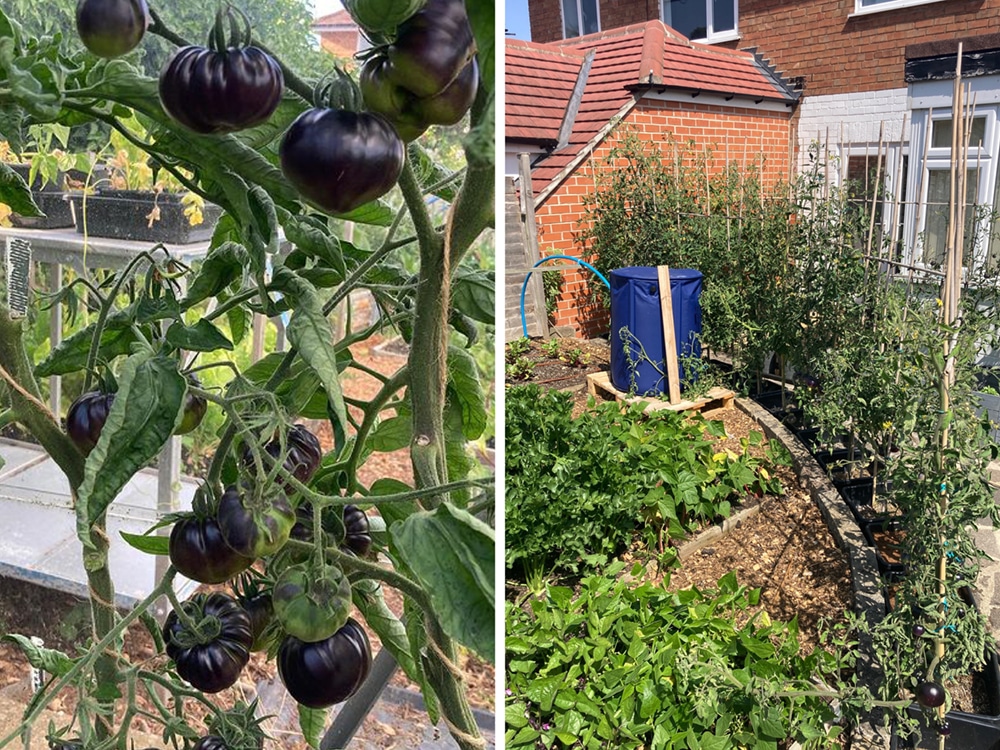
For 2022 he kitted out several sections of his garden with AutoPot XL modules. These now provide individually plant-controlled, power-free feeding and watering to 52 of his tomato plants. In terms of plant health the results have been startling as Niall explains, ‘I’m finding that the tomato plants in AutoPots have more consistent sized fruit and higher yields per plant. As a seed seller, yield is important to me. That said, the fruit gets eaten or stored once seeds are removed so there’s certainly no waste.’
These results have been replicated wherever XL modules have been used. ‘The outdoor AutoPots were a bit of an experiment to be honest since I hadn’t seen any being used outdoors. I’ve found they’ve outperformed the plants in containers that I’ve been manually watering, again in terms of yield but also in size and general health of the plants.’
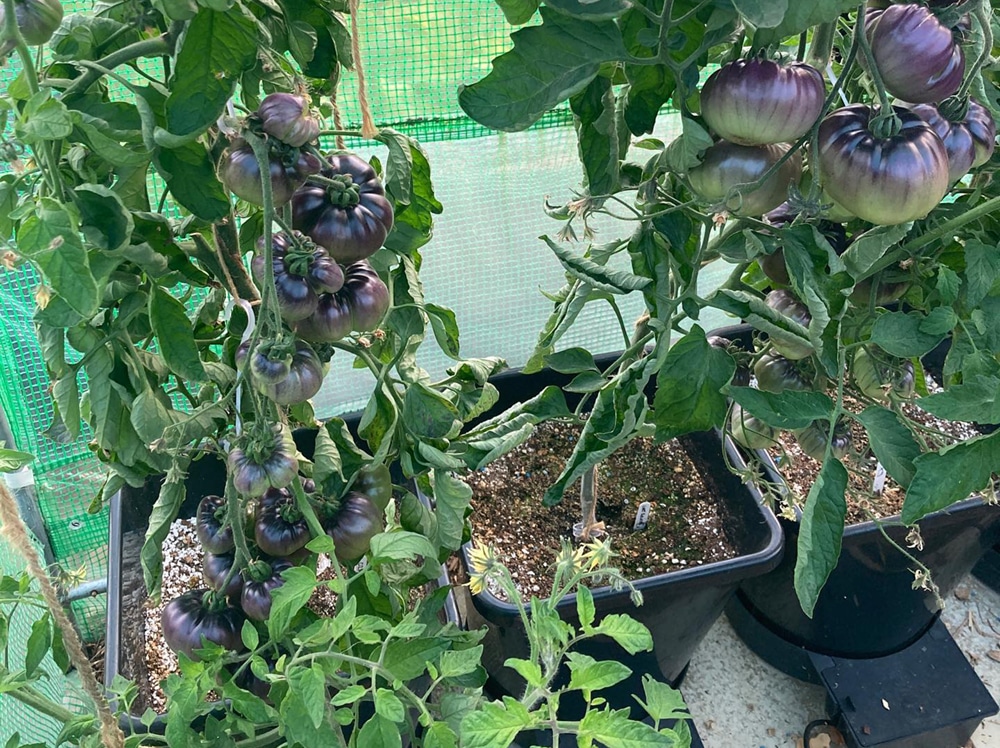
Where manual labour is concerned the difference is also appreciable. ‘In the recent hot weather the AutoPots looked after themselves, even in near 40 degree temps, whilst my other plants were needing 4-times-a-day watering.’ Because the XL modules ensure 100% of irrigation and feed inputs go to the plants and because they feed the plant from below (eliminating evaporation) the savings in terms of water efficiency have also been huge. ‘The AutoPots use about 36% less water compared to the ‘jug and bucket’ plants. Each bank of 26 XL modules are consuming around 115 litres / 30 gal of water a week, whereas the same quantity of hand watered plants would take around 180 litres / 47.5 gal a week.’ Going forwards such savings might very well prove decisive as to whether growers can continue to pursue their passions in the creative fashion they’ve come to enjoy.
For a visual catalyst of your own take a look at Niall’s superb insta page. Prepare to be inspired! Prepare to plant up every available space under your dominion! Our sincere thanks to Niall for the tour, his input, and his close observations on growing with our systems.
| Monday | 9AM-5PM |
| Tuesday | 9AM-5PM |
| Wednesday | 9AM-5PM |
| Thursday | 9AM-5PM |
| Friday | 9AM-5PM |
| Saturday | Closed |
| Sunday | Closed |